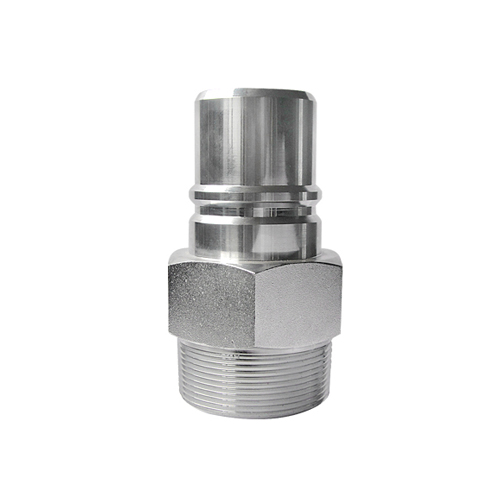Hydraulic systems play a critical role in numerous industries, ranging from construction and manufacturing to aerospace and agriculture. A key component of these systems is the hydraulic fitting, which ensures seamless connections between hoses, pipes, and other hydraulic components. However, one of the most overlooked aspects of hydraulic systems is the cost associated with installing these fittings. Understanding these costs is essential for businesses to manage budgets effectively and avoid unexpected expenses.
This guide, brought to you by HI-TECH. INDUSTRY CO., LIMITED (hereafter referred to as Hoson), provides a detailed breakdown of hydraulic fitting installation costs. We’ll cover everything from the factors influencing costs to tips on minimizing expenses without compromising quality. Additionally, we’ll explore related industry insights to help you make informed decisions.

What Are Hydraulic Fittings?
Hydraulic fittings are connectors used to join different components of a hydraulic system. They ensure a leak-free flow of hydraulic fluid under high pressure, making them indispensable for the efficient operation of the system. These fittings come in various types, including compression fittings, flange fittings, threaded fittings, and quick-connect fittings, each designed for specific applications.
At Hoson, we specialize in providing high-quality hydraulic fittings that meet industry standards. Our products are designed to perform under the most demanding conditions, ensuring durability and reliability for your hydraulic systems.
Factors Influencing Hydraulic Fitting Installation Costs
The cost of installing hydraulic fittings can vary significantly depending on several factors. Below, we’ve outlined the key elements that contribute to these costs:
1. Type of Hydraulic Fitting
The type of fitting you choose has a direct impact on installation costs. For instance, quick-connect fittings are easier and faster to install, which reduces labor costs. On the other hand, threaded fittings may require more time and specialized tools, increasing the overall expense.
2. Material of the Fitting
Hydraulic fittings are made from various materials, such as stainless steel, brass, aluminum, and carbon steel. Stainless steel fittings, while more expensive upfront, offer superior corrosion resistance and longevity, making them a cost-effective choice in the long run.
3. Labor Costs
Labor costs are a significant component of hydraulic fitting installation expenses. The complexity of the installation process, the expertise required, and the location of the system all influence labor costs. Hiring skilled technicians ensures proper installation but may come at a higher price.
4. System Design and Accessibility
The design of your hydraulic system and the accessibility of the installation site can also affect costs. Complex systems with hard-to-reach areas may require additional time and specialized tools, increasing installation expenses.
5. Quality Standards and Compliance
Adhering to industry standards and regulations is crucial for the safe and efficient operation of hydraulic systems. Ensuring compliance may involve additional costs for certified fittings and professional installation services.
Cost Breakdown of Hydraulic Fitting Installation
To give you a clearer understanding of hydraulic fitting installation costs, we’ve provided a general cost breakdown below:
| Cost Component | Estimated Percentage of Total Cost |
|---|---|
| Fitting Material | 30-40% |
| Labor | 40-50% |
| Tools and Equipment | 10-15% |
| Compliance and Testing | 5-10% |
It’s important to note that these percentages are approximate and can vary based on the specific requirements of your project. At Hoson, we offer customized solutions to meet the unique needs of our clients, ensuring cost-effectiveness without compromising quality.
Tips to Minimize Hydraulic Fitting Installation Costs
While hydraulic fitting installation costs are unavoidable, there are several strategies you can employ to minimize expenses:
Plan Ahead: Proper planning can help you avoid unexpected expenses. Work with experienced professionals to design an efficient hydraulic system that minimizes installation complexity.
Invest in Quality Fittings: High-quality fittings may have a higher upfront cost but can save you money in the long run by reducing maintenance and replacement expenses.
Hire Skilled Technicians: Experienced technicians can complete the installation more efficiently, reducing labor costs and ensuring a reliable system.
Regular Maintenance: Regular maintenance can prevent costly repairs and extend the lifespan of your hydraulic system.

Industry Insights: Trends in Hydraulic Fitting Technology
As a leading provider of hydraulic solutions, Hoson stays at the forefront of industry trends. Here are some notable developments in hydraulic fitting technology:
1. Smart Fittings
Advancements in IoT technology have led to the development of smart hydraulic fittings. These fittings are equipped with sensors that monitor pressure, temperature, and flow rate, providing real-time data for predictive maintenance.
2. Eco-Friendly Materials
The industry is increasingly adopting eco-friendly materials for hydraulic fittings. These materials reduce environmental impact while maintaining high performance and durability.
3. Modular Designs
Modular hydraulic fittings simplify installation and maintenance, reducing downtime and labor costs. These designs are particularly beneficial for complex systems with multiple components.
Conclusion
Understanding the costs associated with hydraulic fitting installation is crucial for effective budget management and system optimization. By considering factors such as fitting type, material, labor, and compliance, you can make informed decisions that balance cost and quality.
At Hoson, we are committed to providing high-quality hydraulic fittings and installation services tailored to your needs. Contact us today to learn more about our products and solutions. Together, we can ensure the efficiency and reliability of your hydraulic systems while keeping costs under control.
By staying informed about industry trends and adopting best practices, you can minimize expenses and maximize the performance of your hydraulic systems. Trust Hoson for all your hydraulic fitting needs, and let us help you achieve your operational goals.



